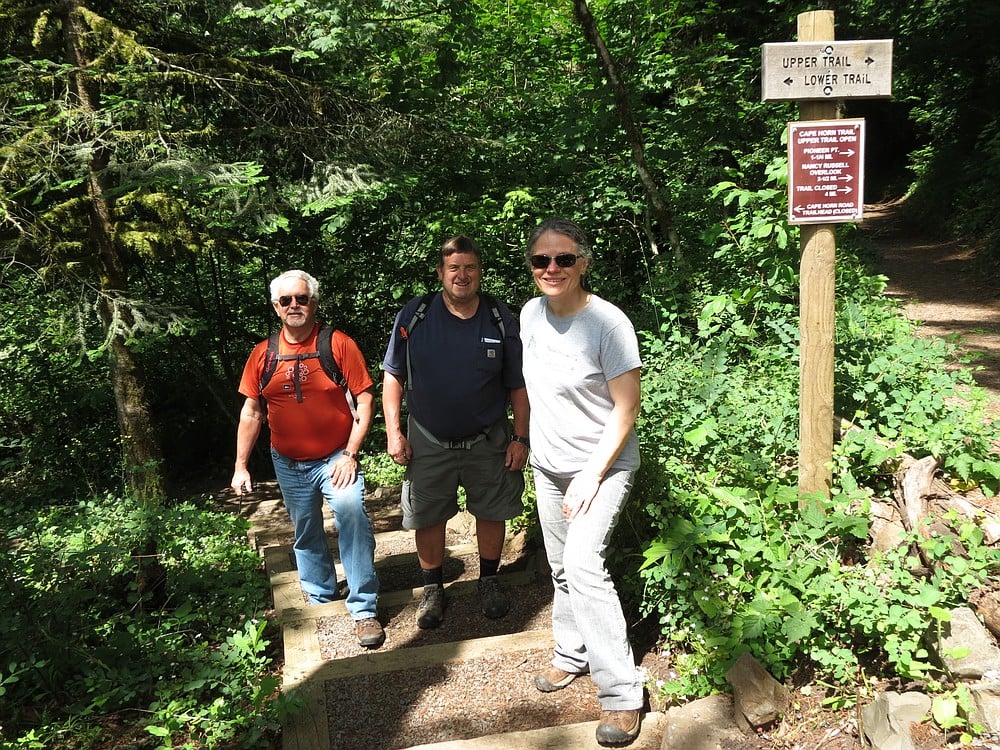o Saturday and Tuesday, July 15, from 10 a.m. to 3 p.m.
o To volunteer, e-mail [email protected]
o Hard hats, tools and safety demonstrations are provided
o The upper and lower trail head is located across the Skamania County Transit Park & Ride parking lot on Salmon Falls Road, near milepost 26 on State Route 14
o For more information, visit www.capehorntrail.org
One step at a time, the Cape Horn Trail is changing.
“When hikers see us working on the trail, they are always so appreciative,” said Cape Horn Conservancy President Teresa Robbins. “People tell us this is their favorite hike in the Gorge. That’s our goal. We want to be number-one.”
A section within the lower trail has been closed since February to allow native peregrine falcons to nest. It re-opens to hikers July 16.
“It’s always fun seeing people using the trail and enjoying it,” said board member Larry Keister. “This is where we like to be.”
As Robbins talks about improvements to the 7.7-mile loop spanning through Washougal and Stevenson, she stops to pick up cigarette butts, clear branches off the path and fetch a jar of peanut butter out of a creek.







